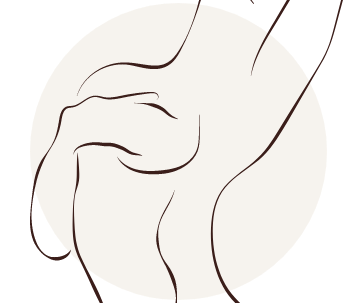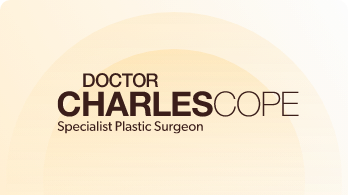Fat transfer to breast is a common procedure for both cosmetic and reconstructive breast surgery. Until recently the main reason was to improve the cosmetic result of patients with breast implants, for problems such as irregularity and rippling which is relatively common in thin patients.
Recently increasing number of patients are having small volume breast augmentation performed using fat transfer alone. A cup increase in breast size can often be achieved with one procedure* (much less than the average increase in size achieved with breast augmentation), so often multiple fat transfer procedures (sometimes even 3 or 4) are required to achieve the result usually achieved with a breast augmentation. This also depends on whether you have enough fat to harvest from other sites, which can be a limiting factor in thin patients. Fat transfer to breast can also be used to improve breast asymmetry by increase the size of the smaller breast.

Fat is harvested from elsewhere in the body by liposuction (common areas are the abdomen, flanks and thighs), and then filtered before injecting into the breast. If you are thin then this can limit the amount of fat that can be harvested, and therefore the amount of breast augmentation size increases possible with fat transfer to the breast.
Frequently Asked Questions
Fat transfer to breast will enlarge your breasts, improving breast asymmetry or making them more in proportion to the rest of your body. If you have a small amount of loose skin or mild ptosis (droop), which commonly often occur after pregnancy, breast feeding and weight loss, fat transfer to breast can be used to improve these problems.
Fat transfer to breast can be performed at any age once your breasts have stopped developing (often about 16-18 years of age). If you are about to have children soon then you should wait until after pregnancy and breastfeeding, as these often change your breasts and change the result of fat transfer to the breasts – if you are young and this is many years away then this may not be an issue. Many patients also have fat transfer to breast after having children to correct changes that have occurred with pregnancy and breastfeeding.
A fat transfer to breast does not affect your ability to breast feed as the breast tissue itself is not altered* – it is important to realise that only about two-thirds of people can successfully breast feed even if they have not had breast surgery.
Fat is removed by liposuction from other areas of the body such as abdomen, flanks and thighs, resulting in a flatter contour in these areas. The fat is the then filtered to ensure that only pure fat is injected into the breast. If you are thin then this can limit the amount of fat that can be harvested, and therefore limit the amount of breast augmentation size increase possible with fat transfer to the breast.
Not all the fat that is transferred survives or ‘takes’, but by 6-8 weeks the long-term result is seen and is permanent*. On average one cup breast size increase can be achieved with the operation, so often 3-4 procedures are needed to achieve the same result as breast augmentation with breast implants.
The operation is performed as a day-surgery procedure in an accredited hospital
Small incisions (less than 5mm) are used to harvest and inject the fat during the fat transfer procedure. These scars are rarely visible down the track*.
During the first week after surgery you need to rest and take things quietly at home. When you go home there will be waterproof dressings covering the wounds, which normally stay on for one week, allowing you to shower normally. You should wear something comfortable and supportive on your breasts e.g. a sports bra or crop top, and you need to keep a compression garment on the areas where the fat is removed for a few weeks. Most people feel well enough to drive to the postoperative visit, which is usually 5-7 days later*, and are back to work by this time after fat transfer to the breasts*.
For most people it is 3-4 weeks until they are ready to return to sport and full activities*.
*Note results vary from patient to patient



